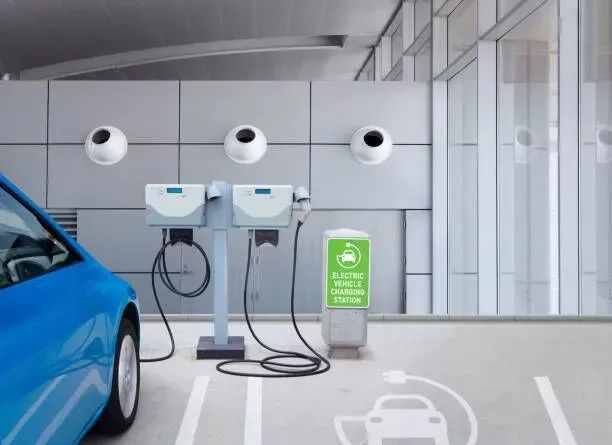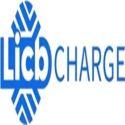Notifications

7 minutes, 2 seconds
-24 Views 0 Comments 0 Likes 0 Reviews

As a leading EV charger manufacturer in China, LiCB Charge delivers reliable AC and DC electric vehicle charging stations along with comprehensive charging solutions.
As electric vehicles (EVs) continue to gain popularity, many homeowners are opting to install EV chargers at home for faster, more convenient charging. Among the available options, Level 2 EV chargers offer the best balance of speed and cost-effectiveness—making them the preferred choice for residential use.
However, installing a Level 2 charger involves more than simply plugging in a unit. It requires an understanding of your home's electrical capacity, permitting requirements, and installation best practices to ensure both safety and long-term reliability.
This comprehensive guide walks you through everything you need to know about installing a Level 2 EV charger—from electrical readiness to infrastructure enhancements.
Level 2 chargers operate at 240 volts and can deliver between 10 to 60 miles of range per hour, depending on your EV model and the charger's amperage. This is a significant upgrade over Level 1 chargers, which rely on 120-volt outlets and can take over 24 hours to fully charge a vehicle.
For homeowners who drive regularly or own EVs with larger batteries, Level 2 chargers offer overnight charging and greater convenience.
Installing a Level 2 EV charger involves high-voltage electricity and must be performed by a licensed electrician. Professional installation ensures:
Compliance with local electrical codes and building regulations
Proper installation of wiring, breakers, and the charging unit
Safe operation and long-term reliability
Coordination for required permits and inspections
Hiring a qualified professional helps you avoid safety hazards, expensive mistakes, or potential code violations.
Before installation, your electrician will assess your home's electrical panel to confirm it can support the charger. Most Level 2 chargers require a dedicated 240V circuit with a 40A–60A breaker.
If your panel is already servicing high-energy appliances (e.g., HVAC systems, dryers), it may not have enough capacity left. In such cases, you have two options:
Upgrading from a 100-amp to a 200-amp panel provides the capacity needed for a Level 2 charger and future-proofing for other technologies like solar panels or battery systems.
Estimated Cost: $2,000 – $4,000
Timeline: Several weeks to a few months
Additional Steps: Permitting, utility coordination, inspections
Load management systems monitor your home’s total power usage and automatically adjust the charger’s draw to avoid overloading the panel.
Estimated Cost: $200 – $600
Installation Time: Often under 30 minutes
Benefit: Integrate a Level 2 charger without upgrading your panel
Most jurisdictions require electrical permits and inspections before and after installation. These ensure code compliance and are often necessary to qualify for utility rebates or incentives.
Your electrician will typically handle the application and inspection scheduling as part of the installation service.
Installing a Level 2 charger involves more than electrical wiring. Here are three critical accessories to enhance your setup:
Most Level 2 chargers are wall-mounted. If your parking area lacks a wall, consider using a pedestal or stand. These are made of weather-resistant materials and are ideal for:
Open driveways
Detached garages
Shared or multi-vehicle carports
Long charging cables can be a tripping hazard and degrade faster when left on the ground. NEC Article 625 requires management systems for cords over 25 feet.
Options include:
Retractable reels
Hooks or wall arms
Swing arms to control cable reach and tension
These help organize your space, protect your equipment, and maintain safety.
Installing bollards, guard rails, or wheel stops helps protect your charger from accidental vehicle contact—especially in tight spaces or shared environments.
These structural elements reduce the risk of expensive repairs and extend the life of your equipment.
| Component | Estimated Cost |
|---|---|
| Level 2 Charger (hardware) | $400 – $1,200 |
| Professional Installation | $300 – $1,000 |
| Main Panel Upgrade (if needed) | $2,000 – $4,000 |
| Load Management Device (optional) | $200 – $600 |
| Cable Management System | $100 – $300 |
| Mounting Pedestal or Stand | $200 – $600 |
| Permits and Inspection Fees | $100 – $500 |
| Structural Barriers | $100 – $300 |
Total Range: $1,000 – $6,000+, depending on your home’s electrical condition and installation preferences.
To determine the best installation path, consider:
Location and layout of your parking space
Distance from the electrical panel
Current electrical system capacity
Your EV's charging requirements
Future additions (e.g., second EV, solar system)
Consulting with a licensed professional ensures that your choices are safe, efficient, and tailored to your specific needs.
Installing a Level 2 EV charger at home enhances the convenience, reliability, and long-term value of EV ownership. Whether you're upgrading your electrical panel or using a load management solution, the investment pays off through faster charging and improved daily usability.
With thoughtful planning, proper infrastructure, and professional installation, you can enjoy worry-free, high-speed EV charging right from your own driveway.Know more about Google SEO Directory
China EV Chargers EV Charger Manufacturer Smart EV Chargers Electric Car Chargers Electric Vehicle Chargers Electric Car Charging Stations

